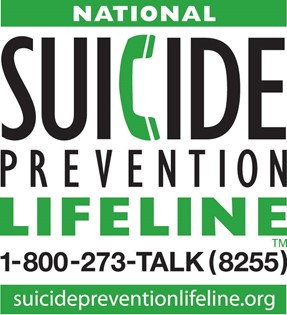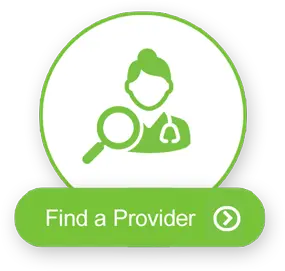Pete Davidson, star of Saturday Night Live, posted to Instagram in December 2018:
“i really don’t want to be on this earth anymore. i’m doing my best to stay here for you but i actually don’t know how much longer i can last. all i’ve ever tried to do was help people. just remember i told you so.”
He then almost immediately deleted his Instagram account.
Many people were worried and reached out – offering help, support and a listening ear. A month later, he appeared on Saturday Night Live, addressing his Instagram post. As reported on CNN, his colleague and friend John Mulaney said to him: “Pete, look at me. Look me in the eye. You are loved by many…And we are glad you’re okay.”
If someone you love is threatening suicide or harming themselves – over social media or in person – what are the steps you should take?
Warning signs of suicide
The first step in helping someone you love is knowing and recognizing the warning signs of suicidal ideation.
“Some warning signs may help you determine if a loved one is at risk for suicide, especially if the behavior is new, has increased, or seems related to a painful event, loss, or change,” according to the National Suicide Prevention Lifeline. The Lifeline website includes a list of some of these warning signs for reference:
 “Talking about wanting to die or to kill themselves
“Talking about wanting to die or to kill themselves- Looking for a way to kill themselves, like searching online or buying a gun
- Talking about feeling hopeless or having no reason to live
- Talking about feeling trapped or in unbearable pain
- Talking about being a burden to others
- Increasing the use of alcohol or drugs
- Acting anxious or agitated; behaving recklessly
- Sleeping too little or too much
- Withdrawing or isolating themselves
- Showing rage or talking about seeking revenge
- Extreme mood swings”
Suicide-related behavior can be exhibited in several ways. Sometimes, you can notice a change in behavior and how the person communicates. If you aren’t in the same location as them, you may notice a change in how they communicate over social media sites.
Signs of self-harm or suicidal ideation are not always obvious or easy to recognize on social media, especially given the sarcastic, self-deprecating nature of some posts. A person may joke about suicidal behavior or use song lyrics, quotes, or even emojis to describe how they are feeling. They likely will not use direct language, like asking for support or admitting they are suicidal.
Even if a post seems lighthearted, sarcastic, or cryptic, it’s best to take it seriously. The person may truly be in crisis and expressing it in the only way they feel comfortable.
“Talking about a wish to die does not always mean that a person is actually going to hurt themselves, but it is a request for you to pay attention, and it is important to acknowledge that you’ve heard their pain,” wrote F. Diane Barth, psychotherapist, in an article on NBCNews.com. “Social media always tends to amplify anything, good or bad, which also makes it harder to assess what’s happening. And adding to the difficulty, an online statement demolishes boundaries, bringing the personal into the public, and making us all equally privy to the inner turmoil of someone we might not know well — or at all.”
Take ACTion
The website, Stop a Suicide Today, writes that “70% of people tell someone or give warning signs before taking their own life.”
The site offers the acronym ACT® to help people understand the appropriate steps to take if someone is threatening suicide:
A – Acknowledge. Take the warning signs seriously and listen attentively.
C – Care. Tell them you love them, share how they are important to you, and voice your concern in a caring way. Remain calm and do not tell them to “snap out of it.”
T – Treatment. Seek professional help right away. This could include bringing them to the nearest emergency room, calling 911 or calling the National Suicide Lifeline at 1-800-273-TALK (8255).

Dr. Barth, in the NBCNews.com article, wrote:
“It’s good to express concern and caring, but remember that social media exaggerates everything. Loving comments can feel over the top and meaningless, so keep your caring words gentle and genuine. And understand that, along the same lines, subtlety doesn’t exist online. Teasing and snark can come across as mean and hurtful, and an already-vulnerable person can feel deeply wounded by something you intend as just good-natured ribbing.”
If speaking to them in-person or over a phone call isn’t possible, send them a private message, rather than commenting on a public post. Let them know that you are concerned and are reaching out to offer support and love.
Starting the conversation about suicide
You may feel like you don’t know how to start the conversation, but there is no perfect script for this situation. It’s best to say something simple and supportive, such as “Are you doing okay? It seems like you’re going through a tough time.”
Stop a Suicide Today suggests the following ways you may consider starting the conversation:
- “Mention the things that are concerning you: ‘You have been acting really down lately’ or ‘You’ve been missing a lot of work and seem distracted when you are at the office.’
- Be direct: ‘Have things gotten so desperate, that you are thinking about suicide?’ or ‘Have you ever thought of killing yourself?’
- Listen and remain calm
- Assure the person that help is available and treatment works”
“Although it might upset you to hear thoughts about suicide, assure your friend or loved one that you will be there for him or her and that help is available,” according to the organization’s website.
The website encourages asking the person if they have a specific plan, and notes that asking about “suicide does not cause a person to think about or complete suicide.”
Most importantly, tell or show the person that you care about them and encourage them to seek help from a professional.
Suicide risk factors of social media
A study in the Journal of Social and Clinical Psychology found that “limiting social media use to approximately 30 minutes per day may lead to significant improvement in well-being.” Undergraduate students who participated in the research study and limited their social media use to approximately 30 minutes per day showed reductions in loneliness and depression compared to those who did not limit their social media exposure.
If social media is supposed to keep us connected, how can it make us feel lonelier? There is a combination of factors that can have a negative impact on mental health.
Cyberbullying. Cyberbullying is a form of bullying or harassment that occurs online, through texting, email, or social media. According to StopBullying.gov, it is unique from typical bullying in three ways:
- “Persistent – Digital devices offer an ability to immediately and continuously communicate 24 hours a day, so it can be difficult for children experiencing cyberbullying to find relief.
- Permanent – Most information communicated electronically is permanent and public, if not reported and removed. A negative online reputation, including for those who bully, can impact college admissions, employment, and other areas of life.
- Hard to Notice – Because teachers and parents may not overhear or see cyberbullying taking place, it is harder to recognize.”
Due to the internet, cyberbullying can happen at any time or place, essentially removing the ability to have a safe space. Social media may also allow perpetrators to remain anonymous if they choose, which can make them feel more confident and comfortable harassing their victims. Being attacked with teasing, mean comments, rumors, and threats can leave long-lasting damage to a person’s mental health.
Parents should educate their children on what to do if they are being cyberbullied. StompOutBullying.org recommends blocking the bully, telling a trusted adult, and saving proof of the harassing messages. If your child is being targeted, alert their school and guidance counselor.
“You should immediately contact your local law enforcement agency… if you have any knowledge that personal contact information has been posted online, or any threats have been made to your child,” according to StompOutBullying.org.
FOMO. FOMO or the “Fear of Missing Out” refers to the feeling or perception that your peers are having exciting and rewarding experiences without you. Social media creates endless opportunities to experience FOMO. While scrolling on Facebook or Instagram, you may see others posting about picture-perfect experiences that make you feel as though you missed a memorable event.
“In general, FOMO causes people to assume that they have a low social rank. This belief, in turn, can create anxiety and feelings of inferiority,” according to a VerywellFamily.com article.
The Verywell Family article encourages practicing a mental exercise called reframing in order to change negative thought patterns and cope with FOMO.
The website suggests these tips to reframe your thinking:
- “Track negative thoughts”
- “Replace negative thoughts with more reasonable ones”
- “Schedule technology breaks and do something else entirely”
- “Be realistic about availability”
- “Practice mindfulness”
Comparison. Social media invites limitless comparison on nearly every aspect of life – your job, your family, your love life, your friends, your clothes, your possessions, your social life, etc. Facebook and Instagram are often highlight reels of engagements, weddings, children, promotions, and vacations. It can feel disheartening to compare your own life to the seemingly perfect lives of your internet friends. It can appear that your friends’ and loved ones’ lives are full of successes without any adversity, which can make your life feel unpleasant or boring in comparison. You may feel as though you are lacking things in your life that everyone else has.
However, it’s important to remember that social media is rarely a true representation of life. Perceptions can easily be manipulated. People tend to only share snapshots of the best, most exciting parts of their lives, while their day-to-day struggles are often kept private.
Benefits of social media on mental health
This isn’t to say that all social media is inherently bad. In fact, social media platforms have the potential to be a positive tool for our mental health when used in a healthy way. An article on HelpGuide.org points out that social media enables us to stay connected with friends and family, seek and offer emotional support, find an outlet for our creativity, discover and learn valuable information, and more.
TikTok is one example of how a social media platform can be used to empower people to take care of their mental health. “TikTok is giving people a mental health education they never had before.” according to an article in USA Today.
Therapists and mental health advocates on the app are leading the conversation around mental health and providing accessible mental health education to anyone who will listen. By searching the hashtag #mentalhealth, you will be met with countless videos of TikTok creators providing suicide prevention resources, reducing stigma around psychiatric medications, increasing awareness and understanding of mental illness, and more.
This content can provide temporary help to someone who is unable or reluctant to seek professional help due to their circumstances.
“[TikTok’s] algorithm allows it to reach audiences who may not even be considering therapy, whether because of a lack of knowledge or introspection, cultural stigma or barriers to access,” the article in USA Today notes. “It offers people the sense that whatever they’re dealing with, they’re not alone.”
Suicide Prevention Resources
With the mental health content exploding on TikTok, the app has begun to take measures to keep the platform safe. In September 2021, TikTok announced that it would be implementing well-being resources to support those who are struggling with suicide ideation, self-harm, and other mental health problems.
“While we don’t allow content that promotes, glorifies or normalizes suicide, self-harm or eating disorders, we do support people who choose to share their experiences to raise awareness, help others who might be struggling and find support among our community,” writes Tara Wadhwa, director of policy, TikTok US.
According to the announcement, TikTok worked with several suicide prevention organizations to create tools to support users in need of help. The new tools include well-being guides, information on how to responsibly engage with someone in crisis, stronger warning labels for sensitive content, and in-app resources that direct users to emotional support helplines when someone searches a concerning word or phrase such as #suicide.
While disclaimers and support resources won’t solve all mental health concerns with social media, it certainly is a step in the right direction.
If you or someone you know may be struggling with suicidal thoughts, you can call the U.S. National Suicide Prevention Lifeline at 800-273-TALK (8255) any time of day or night or chat online.
If you’d like to learn more about why people attempt suicide and how to help survivors and their loved ones, read these GeneSight blog posts:
https://genesight.com/blog/patient/resources-for-suicide-attempt-survivors-and-their-loved-ones/
https://genesight.com/blog/patient/talking-about-suicidal-thoughts-a-survivors-perspective/
Our articles are for informational purposes only and are reviewed by our Medical Information team, which includes PharmDs, MDs, and PhDs. Do not make any changes to your current medications or dosing without consulting your healthcare provider.
The GeneSight test must be ordered by and used only in consultation with a healthcare provider who can prescribe medications. As with all genetic tests, the GeneSight test results have limitations and do not constitute medical advice. The test results are designed to be just one part of a larger, complete patient assessment, which would include proper diagnosis and consideration of your medical history, other medications you may be taking, your family history, and other factors.
If you are a healthcare provider and interested in learning more about the GeneSight test, please contact us at 855.891.9415. If you are a patient, please talk with your doctor to see if the GeneSight test may be helpful.







